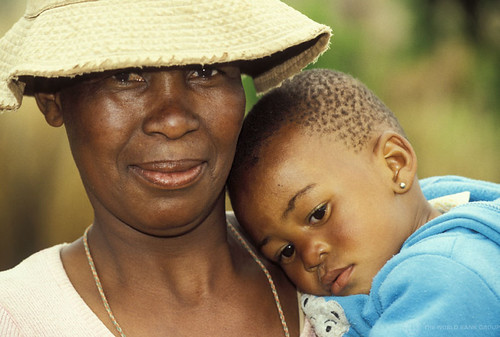While participating in a study of HIV spending efficiency in South Africa, I met a young HIV-positive mother who had just received the joyful news that her new-born daughter was healthy and HIV-free. Wiping away tears of relief, she described the gratitude she felt for the antenatal clinic staff, who had helped start her on antiretroviral treatment (ART) and thanks to whom she now had the hope of a bright future for her daughter. This encounter was just one among many similar incidents during the study – and, as our preliminary data show, is representative of the positive impact of the Government’s strong commitment to bringing down rates of HIV.
South Africa has mounted one of the strongest responses to HIV in the world. Its most dramatic success has been the scale-up of ART since 2003, growing from almost nothing to the country’s largest health program that treated about 1.5 million people in 2011 (out of a total HIV-infected population of 5.6 million).
The impacts of this treatment drive are already showing, with overall mortality, maternal and infant deaths all on a downward trend following their HIV-related peaks in the early-to mid-2000s. However, the cost of sustaining this success is huge: South Africa has committed to putting an estimated target of almost 10% of the entire population on a life-long course of expensive drug treatment. And, even with government negotiators bringing down ART drug prices by 65% since 2008, successful testing campaigns coupled with the worrying increase in resistance to first-line therapies look set to further raise the financial risk.
These challenges extend beyond South Africa. An analysis of the fiscal dimensions of HIV/AIDS released by the World Bank earlier this year in a number of countries concluded that without significant additional investments in prevention starting now, the cost of treatment will rapidly become unaffordable for even the most cash-rich countries on the African continent.
The salient policy issues are not unique to South Africa or the African continent, but the magnitude of the needs and sharp resource constraints in most affected low-income countries elevate them in importance. A critical objective that addresses both humane and financial challenges is accelerating the achievement of the AIDS transition, reversing the trend of increased infections. This does not mean a return to the false dichotomy of treatment versus prevention; treatment is a form of prevention. But this does mean a far more aggressive approach to prevention that uses all the tools available to us: medical, use of technology, and behavioral.
Another—and concurrent—transition, especially for low-income countries that rely heavily on donor assistance for treatment, is essential for sustaining the gains. This is a transition in the approach to financing and delivery that integrates the response at the national level, across funders and service providers within the health sector, and across sectors on the prevention side. Stronger systems should deliver higher-quality services, getting the most value from finite resources, and paying attention to measurable improvements in health outcomes. This approach transcends the debate that pitches health system strengthening against specific interventions. It also promotes a transition from small-scale innovation to robust, systemic, and multi-sectoral responses that match the needs of the population.
Rigorous analytical work must continue to help governments address the long-term sustainability issues of both HIV treatment and prevention activities. Resources should be targeted at those at highest risk of transmitting the virus and in geographic areas of high transmission, with proven, cost-effective interventions that are aligned to the country-specific HIV epidemic context; while technical efficiency will address the reduction or maintenance of low unit costs of HIV services.
The world is learning more every day about both the impact and the response to HIV/AIDS, but knowledge must become action. Prudence dictates not just redoubling efforts or more resources, but a stronger focus on prevention across sectors and an integrated medium-term policy and fiscal perspective.
More
World Bank and HIV/AIDS in Africa
The Fiscal Dimension of HIV/AIDS in Botswana, South Africa, Swaziland, and Uganda



Join the Conversation